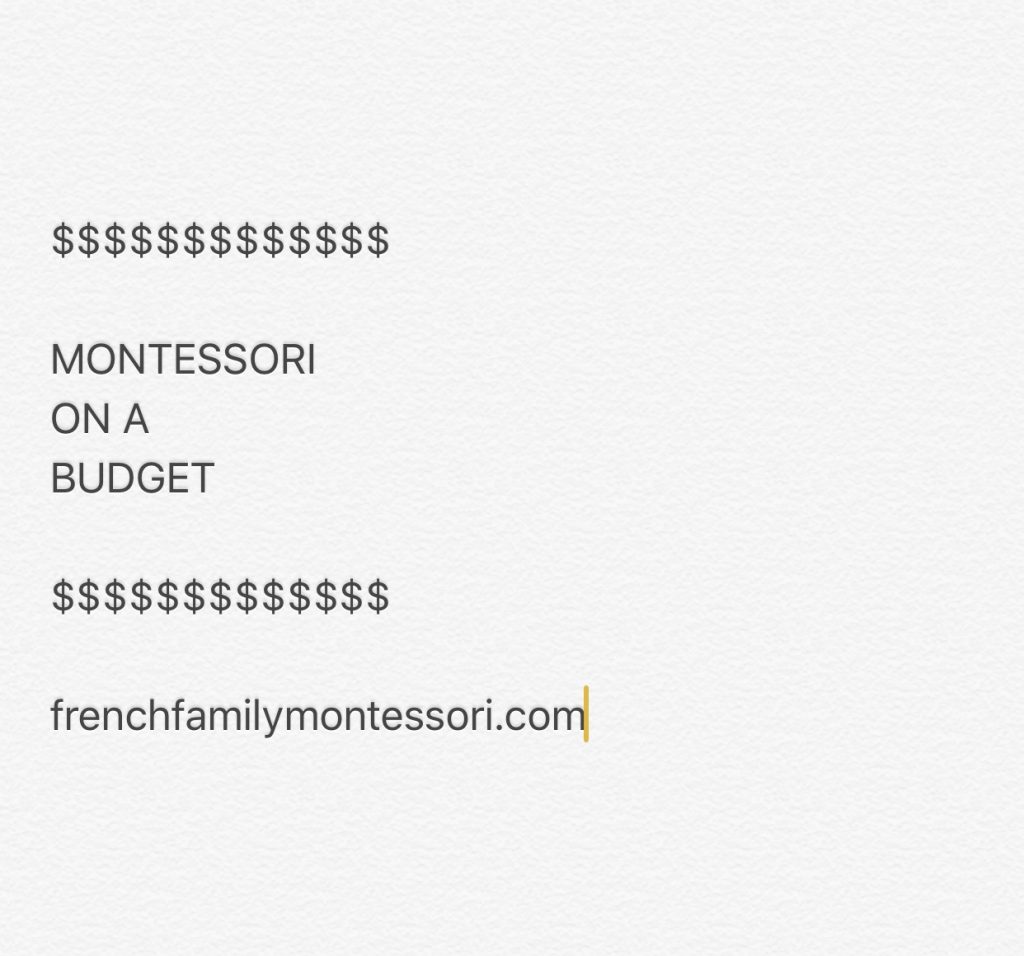
I often hear too many people comment that one must have money to practice Montessori. Not true! Many believe this because of the beautiful “shelfies” on Instagram and some of the high-end materials some Montessori families enjoy. As a financial coach, let me assure you that Montessori can be achieved on any budget. I’d also like to add, that Montessori is far more than materials, it’s a whole philosophy (more on this in another post to come).
-Setting a budget. We are a budget family. We have budget categories for groceries, entertainment (or as I call it “the book fund”, haha), our personal fund, and the girls’ among others. Before making a purchase, I always check to see if it’s in the budget. If there’s not enough money for something in particular, we save until there is. There are certain items we know that will be needed well in advance, like gifts we purchase for birthdays and holidays.
-What is important to your family? This can greatly impact affordability. Some families don’t care for plastic and avoid it at all costs. Some avoid will only purchase materials made with sustainable resources. Some families prefer to purchase based on the needs of the child and will own a variety of materials; plastic, wood, cotton, silicon, etc. Some may decide to support a particular company with subscription that may meet most, if not all, their needs. Others may decided to use a subscription, or two, and purchase additional materials. All these choices will have an impact on cost.
-Follow the child and observe what they actually require. Not every child would benefit from a Pikler triangle or Grimm’s rainbow (which neither are, technically, Montessori–although enjoyed by many Montessori families). There are some materials that T was really into that neither girl shows interest in, at all, like different stacking materials. T would spend so much time with the ring stacker, that we had different varieties for various levels of difficulty. But the girls couldn’t care less, I’ve rotated them a few times and nothing. What my girls may be interested in might not be something your child is drawn to, this is why observation is so important in Montessori.

-DIY. Are you able to create your own activity or your own version of preexisting ones? Nowadays it seems like it can be more cost-effective to purchase certain materials rather than building your own (this has been the case, sadly, far too many times). But if DIYing is something that you plan on doing regularly, then it might, very much, be worth it. When making your own, I highly recommend taking into account wear and tear, durability, and longevity when deciding on what materials to use. Do you want this material to last being used by multiple children over years or just temperately? Is it durable enough to withstand the test your child might put it through?
We hope to have more children and I love the idea of passing down what we create to future generations. My time is also valuable, so I don’t want to spend time on something that will quickly end up in recycling. Because of this, I lean towards materials like wood and fabric instead of cardboard and paper.
-Second hand. The great thing about Montessori materials is that they tend to be timeless and last. It’s amazing what can be found in thrift-stores and on-line resale markets. Looking at second-hand locations is the very first thing I do when there’s a particular material I’m searching for. I’ve also found amazing materials I wasn’t searching for, but will be used in the future. Thrift store is where I find most of our baskets and trays (you can never have enough, haha).
Do you have tricks for doing Montessori on a budget?
.
.
.
